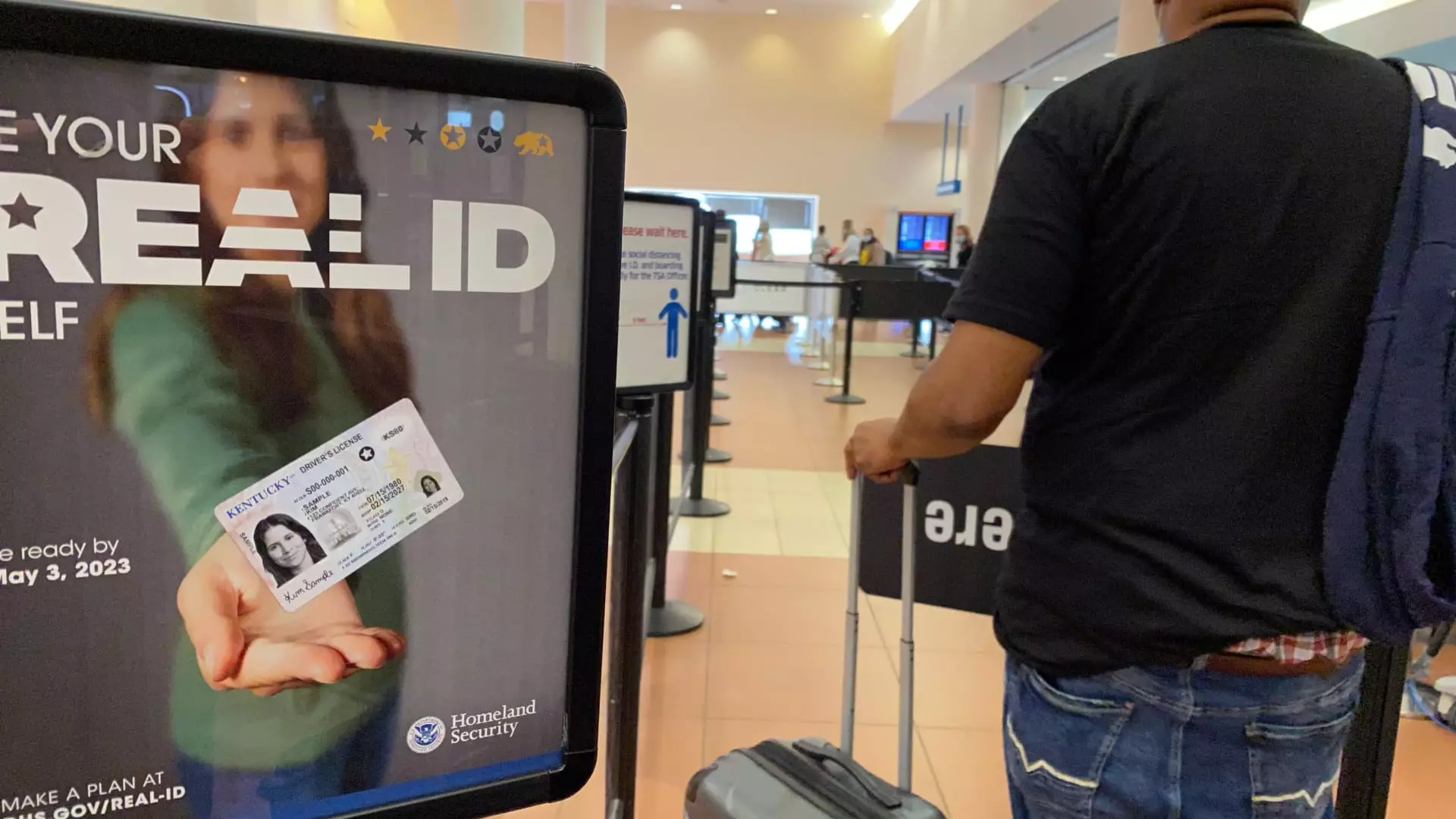The impending enforcement of the Real ID requirements by the federal government, set for May 7, has sent waves of anxiety rippling through the travel community. These regulations aren’t just another bureaucratic hurdle; they symbolize a broader concern regarding state surveillance and personal freedom. As the Transportation Security Administration (TSA) gears up for compliance checks at U.S. airport checkpoints, it’s important to recognize the consequences this policy brings, highlighting not only the logistical struggles but also the deeper implications for privacy and civil liberties.
The Obligation to Comply
The official statistics shared by the TSA indicate that a staggering 81% of travelers are already equipped with Real ID-compliant identification. However, don’t let that figure lull you into complacency. The remaining percentage is still significant and reflects a major oversight that will soon impact many Americans. Forcing citizens to scramble for updated identification—often coinciding with long wait times at overcrowded DMV offices—exposes real flaws in the implementation of such a critical policy. While government officials like John Essig stress urgency, one must wonder: is this requirement really worth the hassle? The notion of planning ahead for a simple flight should not come with the headache of updating ID cards.
The Backstory of Real ID
The genesis of Real ID can be traced back to a tragic chapter in American history—the September 11 attacks. In the wake of terrorism fears, Congress passed the Real ID Act in 2005, intending to bolster national security by imposing stricter identification standards. But 18 years after the initial plan was laid out, the policy’s repeated postponements stir up skepticism. Each rescheduling raises questions about the efficacy of the measure itself and serves as a reminder of the ever-expanding reach of government oversight in civilian life. The question looms: are we trading convenience for an increasingly controlled existence?
Limitations and Alternatives
While Real ID aims to create a uniform identification system, the consequences of not meeting the requirement can be alarming. The TSA’s warnings regarding delays and additional screening for those failing to present compliant identification are harsh. Travel can be stressful enough without having the specter of extensive identification checks lurking in the back of one’s mind. Thankfully, options exist beyond the Real ID. Passports, permanent resident cards, and trusted traveler IDs can serve as alternatives. Yet, these alternatives often come with their own challenges: obtaining a passport can take weeks, and not all travelers possess permanent residency status.
Government Overreach or Necessary Security Measure?
This dichotomy presents a crucial discussion point. Advocates of the Real ID Act argue that it is a necessary measure for enhancing security; however, detractors emphasize the governmental surveillance aspect and the eroding personal freedoms that follow strict identification demands. Privacy advocates warn that mandating such identification can lead to a slippery slope, where more invasive measures become normalized in the name of safety. There’s a fine balance to strike between ensuring public safety and preserving civil liberties, and the Real ID policy seems to lean uncomfortably towards the former.
Travelers’ Reactions
Public sentiment towards the Real ID requirement remains mixed. Many travelers voice frustration, citing obtrusive government mandates as an unnecessary burden impacting their travel experience. Email reminders from airlines and QR codes at airport kiosks may help to inform, but they cannot mask the looming anxiety around the potential chaos that could ensue for non-compliant travelers. The scenario of arriving at a busy airport only to be turned away because of a lack of Real ID compliance is a disheartening prospect that no traveler wishes to face.
In summation, while the push for stronger identification standards is couched in safety rhetoric, it carries with it significant implications for individual freedoms and the everyday traveler. The Real ID Act raises pressing concerns about the integrity of one’s personal identification and the expanding reach of government regulation. As we approach the deadline, one must ponder the complexities of this initiative, balancing national security against the erosion of the personal liberties that define our democratic society.


Leave a Reply